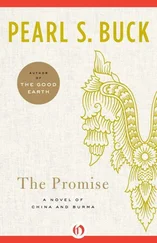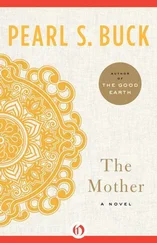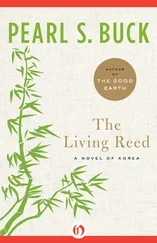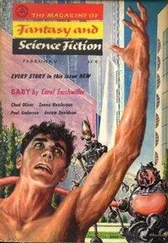At about this time I was allowed an oblique glimpse of Pearl Buck, that is, a view of her contribution that came by accident from an unprejudiced source. While on a writing assignment in Tokyo I received a cable from Miss Buck asking me to visit a Mrs. Renzo Sawada, who had organized her own orphanage to care for abandoned Japanese babies. A woman from a distinguished family, she was highly regarded throughout Japan as a person of compassion and charitable instinct. She had accomplished wonders in finding homes in Japan for her children, but since the Japanese are among the most xenophobic of all national groups — they tend to distrust and fear anyone not pure Japanese — she had found it extremely difficult to place the fair-skinned children of white American G.I.s and totally impossible to locate homes for the offspring of our black G.I.s.
“That’s why Mrs. Buck is so valuable to us,” Mrs. Sawada told me when I visited her in the spacious family home that contained her orphanage. “Through her courage in the United States we’re able to find homes for children who would never find a place if they remained in Japan. Forbidden.”
“How do you get the children to us?”
“That’s part of the miracle. Mrs. Buck raises funds in the States, sends the money to us, and we fly our babies to you. When I was in the States I saw them arriving at Seattle. Most of them had already been assured a place in one of your families. By using photographs.”
“Mrs. Buck directed me to tell you ‘Send us all you have. We’ll find homes for them,’ ” and when I left, Mrs. Sawada said: “Without her help, our G.I. babies would be lost. Here there’s no place for them.”
As I worked with Miss Buck on her gallant venture I gradually became aware that she had a child of her own whom I never saw, a daughter I was told, and it was whispered that this girl was so retarded that she had been spirited away in some refuge for such children. Since I had learned from my work with Pearl that she was acutely reticent about talking of herself, I never asked her about a daughter who might have been impaired; and she certainly never mentioned the matter to me. Nor, because of my travels overseas, was I aware that she had written a magazine article about this family misfortune. No one mentioned it to me, because in our community this was a guarded topic, but when I heard the rumors I did recall what Pearl had told me at our first meeting: “The unwanted children are most often thrown into some institution intended for the mentally defective, and there they run the risk of becoming truly retarded,” and from that bitter assessment I deduced that she knew something about the hideously named “insane asylums” in which the G.I. babies were so often hidden away, thus surrendering any hope of normal development.
In late 1951 a neighbor gave me a copy of The Child Who Never Grew, the hard-cover book based on the magazine article, and in it I read the harrowing account of how, step by agonizing step, a watchful mother awakens to the fact that her child’s mental growth has arbitrarily stopped at a given point, as if a steel curtain has descended about the brain, cutting it off forever from the sentient world about it. Any intellectual communication has became impossible, although the body in which the damaged brain exists survives and even prospers.
When I inquired locally about the book I was told: “Its effect has been phenomenal. Highest praise. Many printings. Because it opened to public discussion a problem that had been previously kept as a shameful secret in the closet of more families than you could ever have anticipated. It was one of the most influential books she wrote.” It is for this new edition of her spiritually moving book that I write this introduction.
Thanks to the original edition, I now understood the secret of Pearl Buck’s drive to save damaged children. Most were less crippled mentally than her daughter, but each was disadvantaged in her or his own way. Watching her work at saving children, I felt increasing admiration for this gallant woman. However, she and I did not speak of her hidden daughter, until one morning, years later, when Welcome House was a thriving orphanage, still placing every abandoned child that came our way. Early one morning she telephoned me from her home: “James, can you spend the day with me, please? We need to talk.” And she proposed that her chauffeur meet me at a rural crossroads.
Unable to guess why she was using this device for an ordinary meeting, I agreed, and when the long black car pulled up I saw that in the back seat rode Pearl Buck, then in her early seventies I believe, regal as always, smiling in friendship and eager to talk. As I settled down for what would be a long drive she said: “On this day I wanted companionship. These days whenever I go to South Jersey I wonder if it will be the last time I shall see her,” and she mentioned the quiet little town in southern New Jersey where the refuge stood in which her daughter Carol, now in her forties, had lived for many decades. “It’s the best institution of its kind in America. Wonderfully caring people who bring the ultimate out of every child who lives with them.”
When I made no comment she continued: “Recent studies by nutrition experts seem to indicate that some chemical deficiency in the first few weeks of life, or perhaps even in the womb during the last month of pregnancy, limited my daughter’s ability to nurture her brain cells. And this dooms any child with such a deficiency to a stunted intellectual growth.” Having said this, she looked straight ahead for some minutes, then punched her right fist into her left palm and said: “How terrible, to think that the absence of some pill no longer than this might condemn a child to perpetual infancy!” She shook her head in disbelief that such a monstrous event could happen, almost by chance.
And for the rest of the trip south she talked about other advances in the genesis and care of children like her daughter.
When we reached the Training School at Vineland I did not see Carol, now a grown woman, for Pearl did not want a stranger like me to confuse her. Pearl spent about two hours with her daughter, leaving me to read in the limousine. Officials of the home, hearing that I was on the grounds, came to extend courtesies but it was clear to me that Mrs. Buck hoped I would stay where I was, and I did.
At the start of the trip back to Buck’s County, Pearl was at first silent, as if the perpetual grief that haunted her over the loss of her child was too poignant to express or share, but after we had traveled some miles in silence, her enthusiasm for life and her constant willingness to face the challenges ahead resumed control, and she talked of her plans for Welcome House and its importation across the Pacific of new groups of Korean-American children who had been abandoned in that country.
During the entire day’s trip, although she was fifteen years older than I, she was the one who was more alert, more cogent in her observations and more excited about the future. It was a revealing visit with a brilliant woman in complete control of her mental processes and her plans for continued work. I make this point because some observers have spread the rumor that in her later years Pearl Buck had begun to lose her mental acuity, or perhaps her constant drive toward the future. I can testify that when I last saw her this was not the case. She was more in command than I and on a higher level of intensity.
That was the last time I would see her, and I was glad it had been in such a varied setting: the long drive through beautiful countryside, the prolonged conversation about orphaned children, the revelations about her fears regarding a parent’s possible culpability for a child’s mental retardation, the love she showed for her daughter, and her plans for continued effort in these fields of adoption and mental retardation in which she had done such superlative work.
Читать дальше












